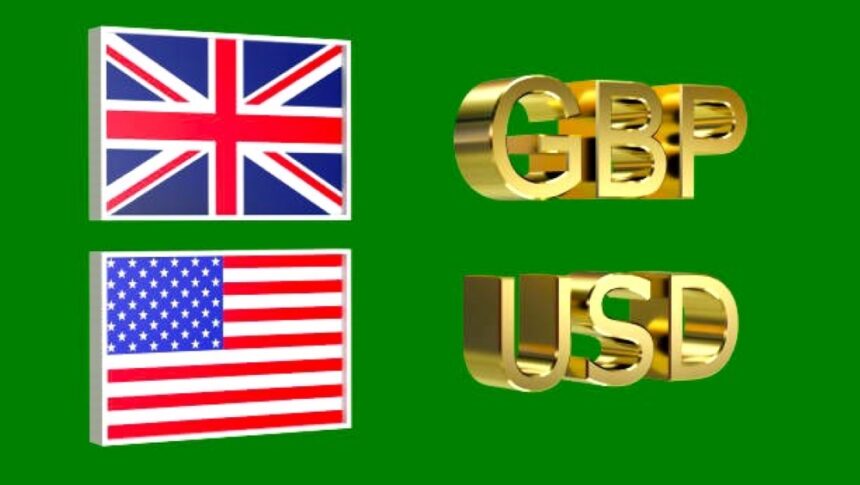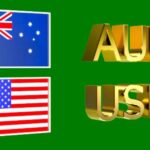Pound Sterling Weakens as UK Inflation Cools BoE Rate Cut Bets Rise.
The British Pound (GBP) faced renewed pressure against its major counterparts on Wednesday, excluding the US Dollar, after the United Kingdom’s inflation report for March revealed softer-than-expected price growth. The report has not only prompted market participants to reprice the timing of Bank of England (BoE) interest rate cuts but also fueled concerns about the broader state of the UK economy.
UK Inflation Slows Sharply, Weakens the Pound
According to the Office for National Statistics (ONS), the headline Consumer Price Index (CPI) rose 2.6% year-over-year in March, missing expectations of 2.7% and down from February’s 2.8% pace. On a monthly basis, headline inflation climbed 0.3%, falling short of the anticipated 0.4%.
Core CPI—which excludes food, energy, alcohol, and tobacco—printed at 3.4% year-over-year, in line with expectations but slightly cooler than the previous reading of 3.5%. Notably, services inflation, a key gauge for the BoE due to its sticky nature, dropped to 4.7% from 5.0% in February. This marked deceleration suggests that underlying inflationary pressures are finally beginning to ease, aligning with the BoE’s goals.
The data seen as a clear signal that the BoE may now have the green light to begin easing its policy stance, possibly as early as May.
BoE Under Pressure to Cut Rates in May
Expectations for a May rate cut from the BoE now firmly in play. UK inflation is now sitting just above the central bank’s 2% target, and with service prices slowing alongside weakening labor market conditions, the case for monetary policy easing has grown stronger.
Moreover, the Autumn Budget announcement by Chancellor Rache Reeves added another layer of concern for businesses. The Chancellor raised employers’ National Insurance contributions from 13.8% to 15%, which is expected to place additional financial burdens on employers and potentially restrict hiring activity. A deteriorating employment outlook could be the final push the BoE needs to shift to a more dovish tone.
In response to the inflation release, UK government bond yields fell across the curve, and short-term interest rate futures reflected increased market pricing of at least one rate cut by early summer.
Pound Heat Map: Sterling Loses Ground Across the Board
The Pound Sterling registered widespread declines against most of its major counterparts except the US Dollar. According to the latest heat map:
GBP fell 0.49% against the Euro (EUR)
The GBP dropped 0.71% against the Swiss Franc (CHF)
GBP declined 0.38% versus the Japanese Yen (JPY)
GBP slipped 0.30% against the Canadian Dollar (CAD)
The only bright spot for the Pound was its relative strength against the US Dollar, where it managed to gain 0.40%.
Pound Resilience vs. US Dollar Amid Trump-Led USD Weakness
Despite its soft fundamentals, the British Pound advanced to near 1.3290 against the US Dollar in European trade on Wednesday. This move was less about Sterling strength and more about Dollar weakness.
Investors are increasingly worried about the future direction of US economic policy under President Donald Trump’s administration. The Trump-led White House recently announced a 90-day pause on reciprocal tariffs for all trading partners except China. This announcement, made on the symbolic “Liberation Day,” sparked fears of a prolonged economic confrontation with Beijing.
While the tariff pause should be seen as positive in the short term, the exception of China—America’s biggest trading partner—remains a concern. Analysts argue that US manufacturers are currently ill-equipped to replace Chinese imports, leading to price increases across many categories. Higher import prices would result in decreased purchasing power for American consumers, directly affecting the 70% of US GDP that depends on consumer spending.
Consequently, the US Dollar Index (DXY) dropped to 99.50, erasing its short-lived rally to 100.00 on Tuesday.
Global Trade Tensions Add to Market Jitters
Investors remain cautious, seeking concrete developments on new trade agreements between the US and its allies. White House Press Secretary Karoline Leavitt stated on Tuesday that the administration is negotiating trade deals with over 15 countries, hinting that several could be finalized soon.
One notable update came from US Vice President JD Vance, who expressed optimism about a trade deal with the UK during an interview with UnHerd. “There’s a good chance we’ll secure a trade agreement with Britain. President Trump has a strong affinity for the UK,” he said.
If successful, such a deal could offer economic relief for the UK post-Brexit, especially amid fears of a slowdown triggered by high borrowing costs, weakening business sentiment, and sluggish global growth.
Market Reaction: Traders Bet on BoE Cuts, Pound Outlook Mixed
Following the inflation data, UK bond yields dropped as traders aggressively priced in BoE rate cuts. The 2-year gilt yield slid by nearly 8 basis points to 3.91%, while the 10-year yield fell to 4.06%. Money markets are now pricing in a 68% probability of a rate cut in May, with another move expected by August.
For the Pound, however, the outlook remains mixed. On the one hand, monetary easing typically weakens a currency. On the other, the prospect of a US recession under Trump’s trade war risks could keep the Dollar under pressure, giving GBPUSD some support despite the domestic dovish shift.
Still, any upward momentum in GBPUSD is likely to be limit unless the UK economy surprises to the upside or the BoE delivers a smaller-than-expected easing cycle.
Technical Outlook for Pound
The GBPUSD pair remains in a short-term uptrend, trading near 1.3290 with immediate resistance seen at the 1.3340 area. A break above this could target 1.3400. On the downside, support lies at 1.3220 and then at the psychological 1.3150 level.
From a broader technical perspective, Sterling bulls will need to navigate through domestic economic uncertainties and the BoE’s dovish pivot while leveraging any potential tailwinds from a weaker US Dollar.
[faq-schema id=”39395″]









